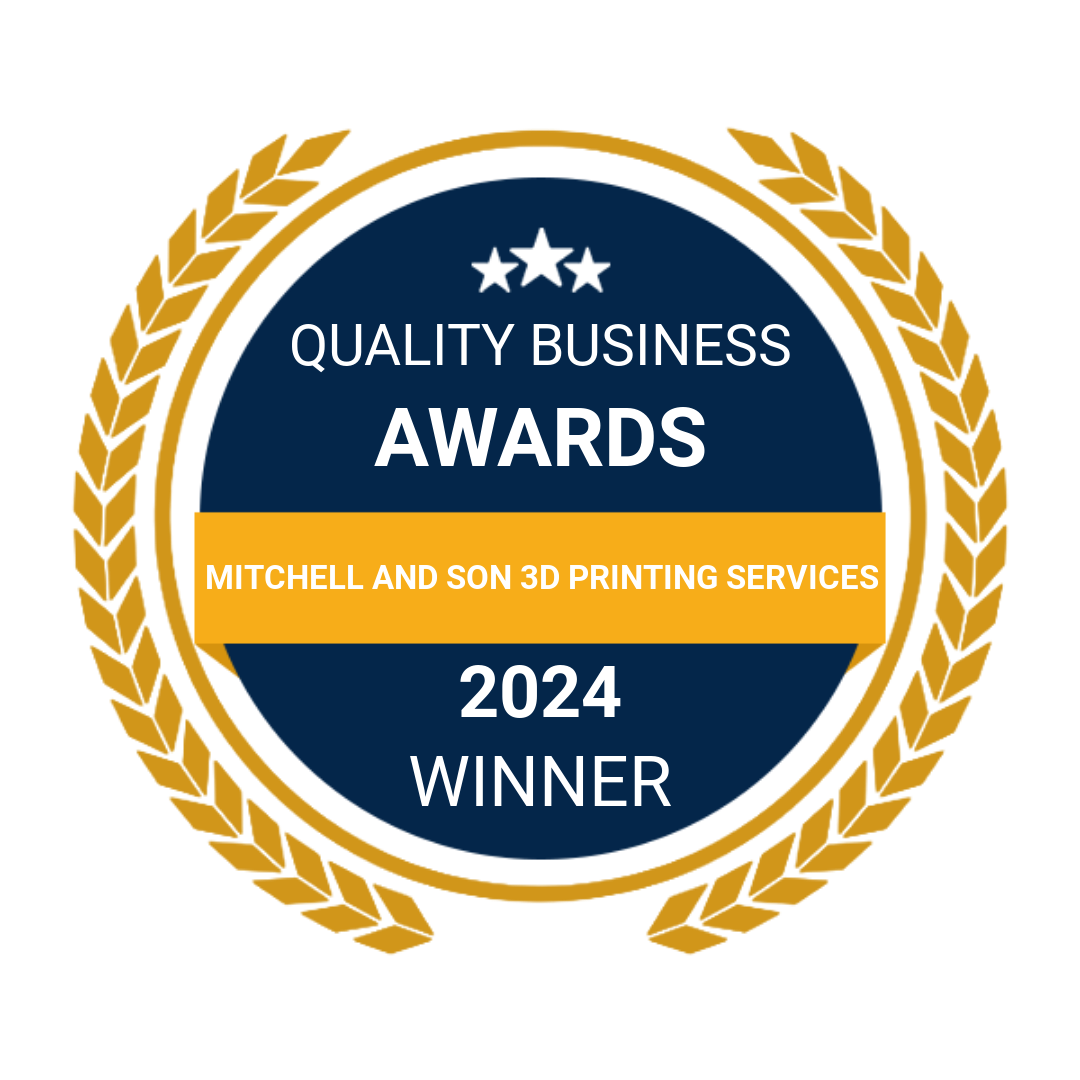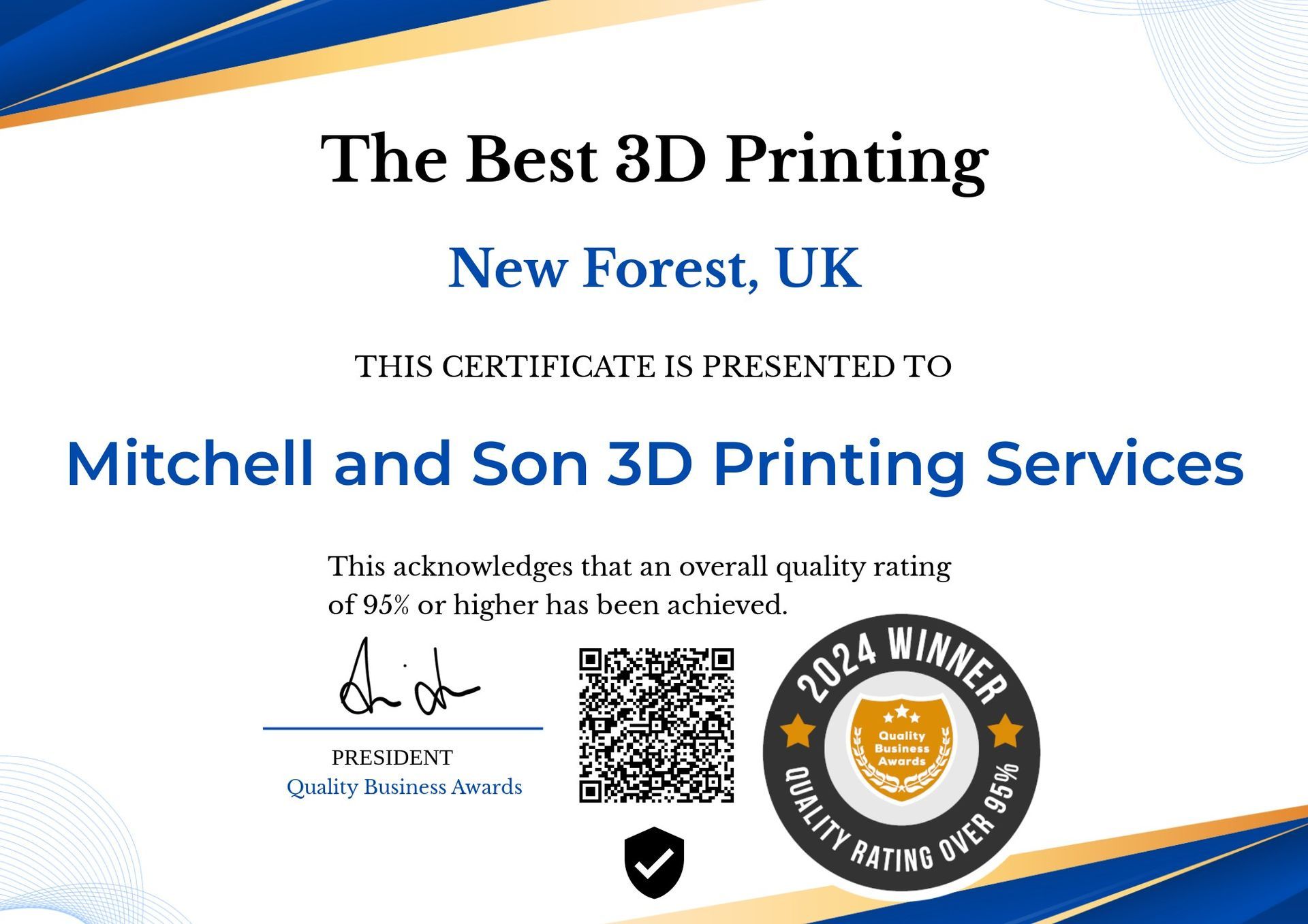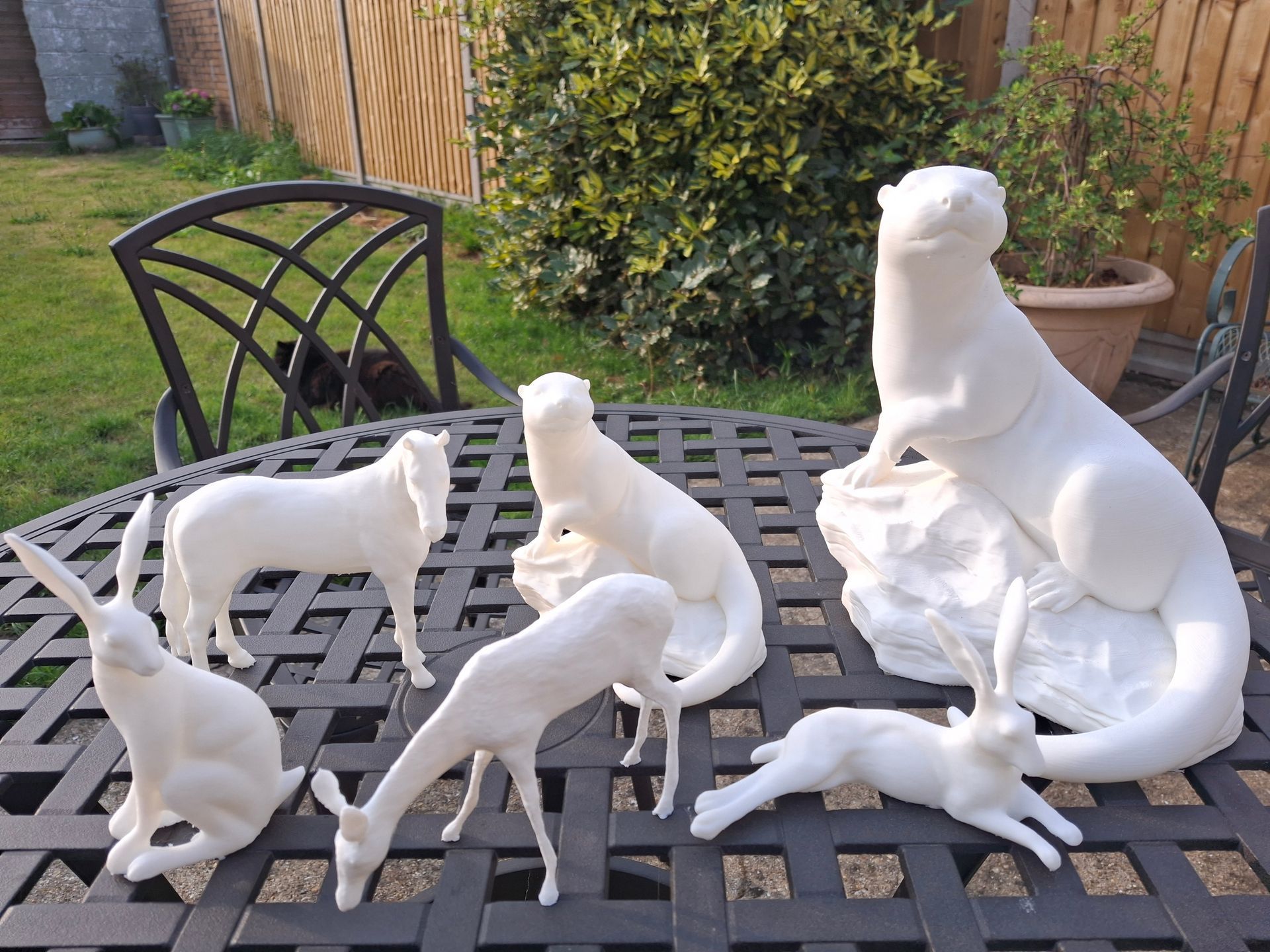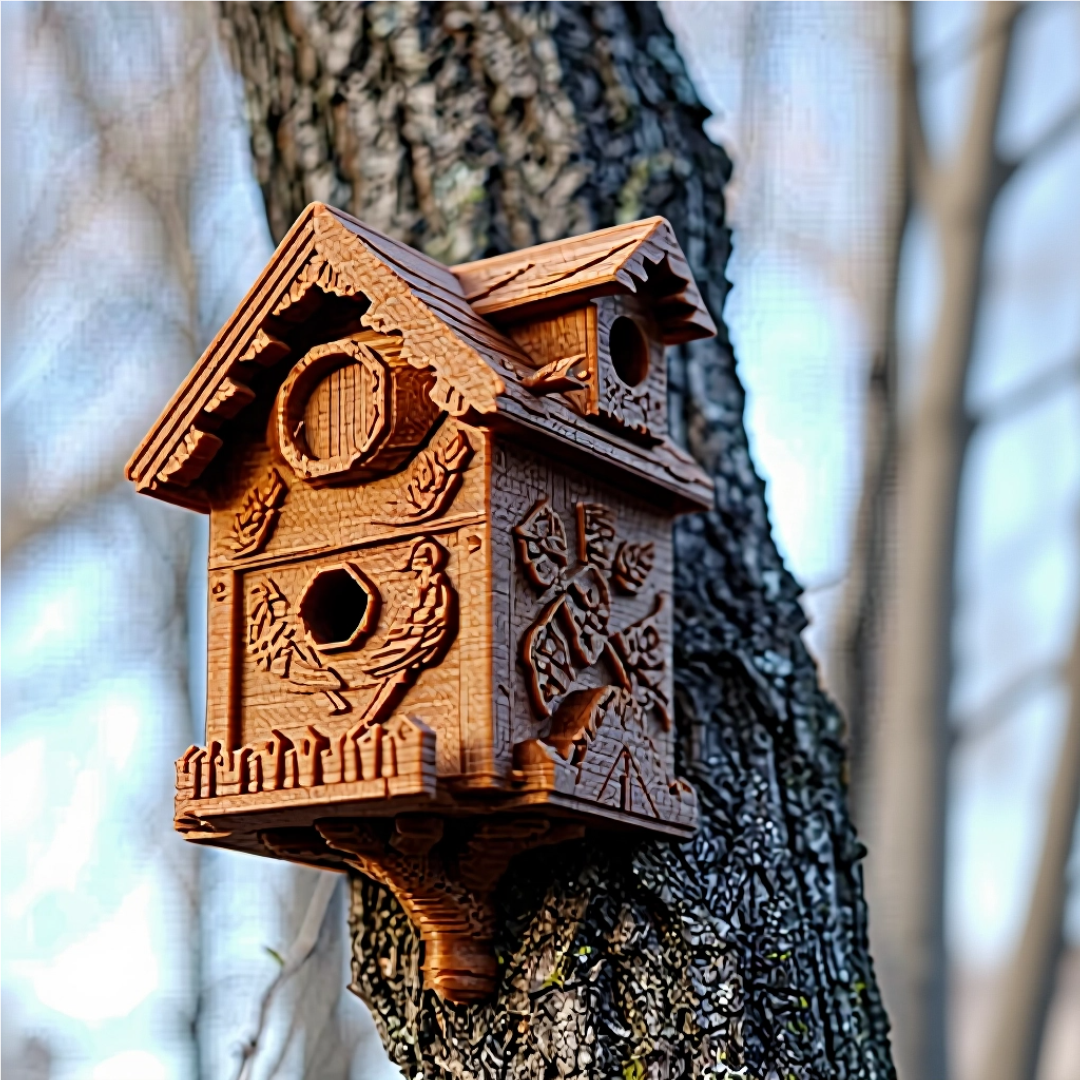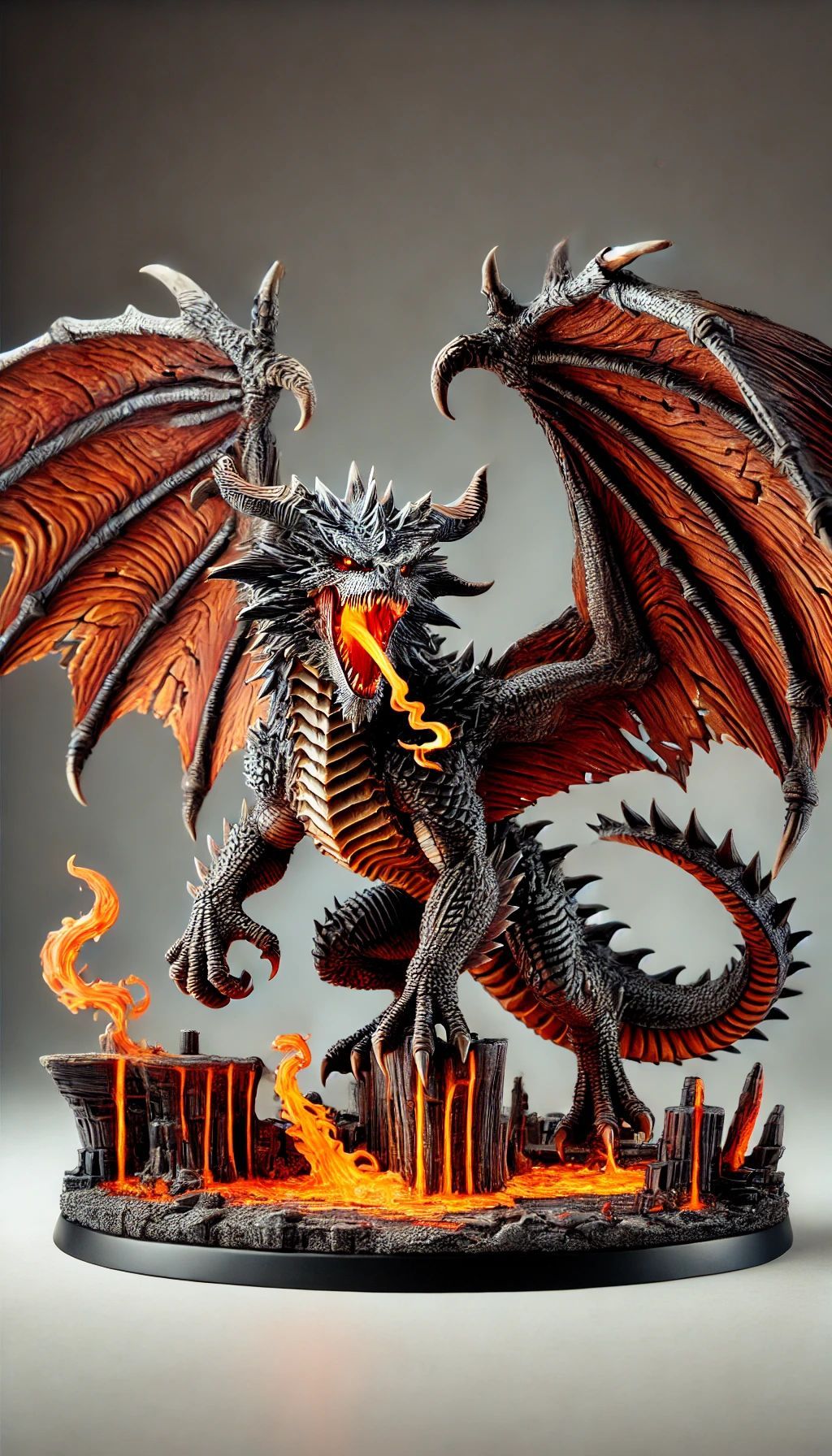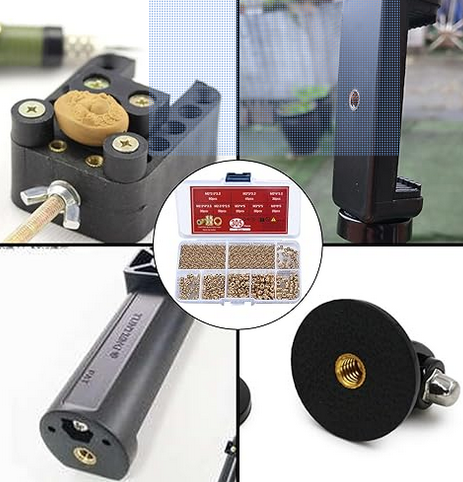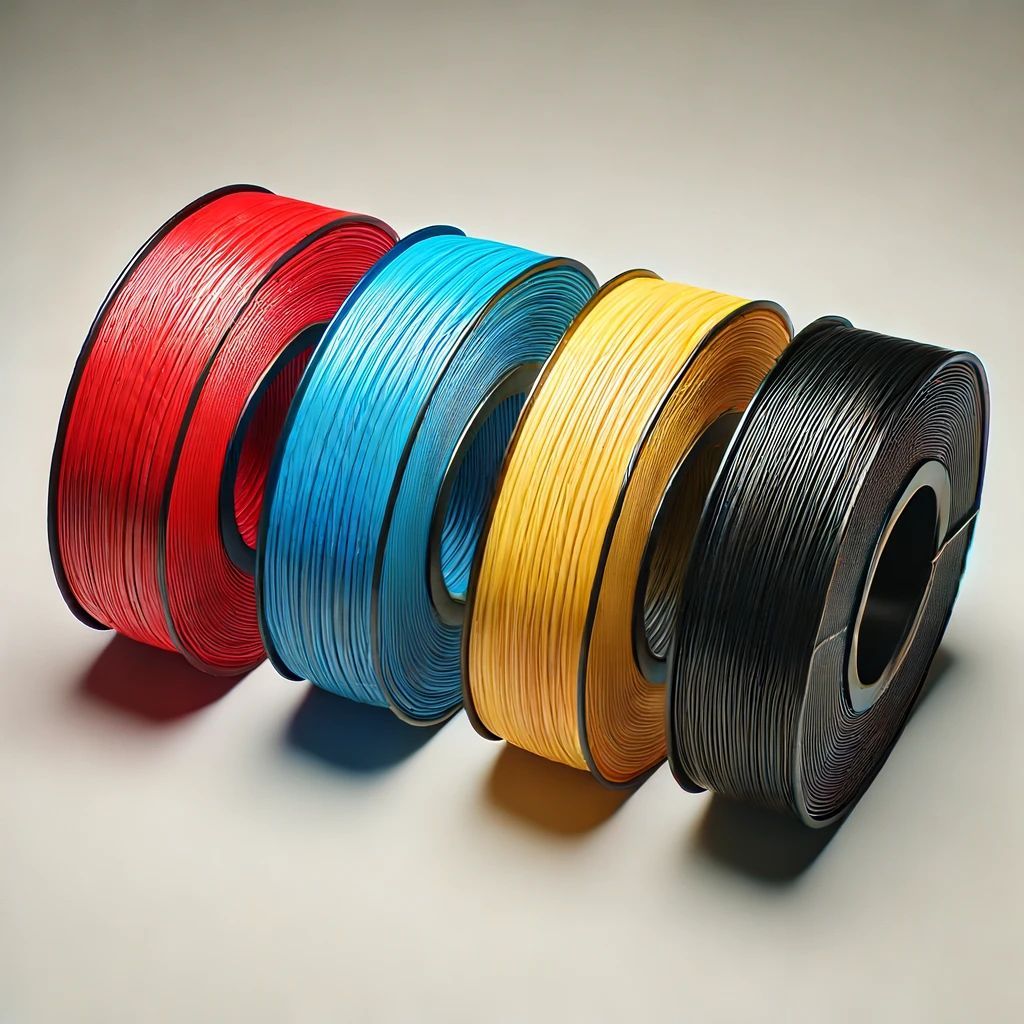3D Printed PLA
When to use this material:
- For quick, inexpensive prototypes, mockups, concept parts
- When dimensional accuracy is okay but mechanical strength is low
- For visual models, form‑checks, parts not subject to stress
Mini case study:
We printed a conceptual cover plate for feedback from the design team. It looked sharp, fit in place, and let us spot clearance issues before moving to tougher material.
SOME INFOMATION ABOUT THE MATERIAL
So let’s talk about PLA — Polylactic Acid. You’ve probably heard of it if you’ve looked into 3D printing at all. It’s one of the most common materials out there, and for good reason. But like everything, it’s got its pros and its cons.
Now here at Mitchells & Son, this is exactly what we do — we help businesses and the man on the street get the parts they need, whether that’s a one-off repair or a batch of products for ongoing use. And knowing which material is right for the job is half the battle.
So let me walk you through PLA, explain what makes it great, where it falls short, and how we can save you time, money, and stress by making sure you don’t waste your cash on the wrong plastic.
🌱 PLA – The Plant-Based Plastic
PLA is a bit different from most plastics. Instead of being made from oil or chemicals, it comes from renewable resources like corn starch or sugar cane. That means it’s biodegradable and much friendlier to the environment compared to ABS, PETG, or polycarbonate.
For businesses trying to hit sustainability targets, or anyone who just wants to feel a bit better about their environmental footprint, PLA is often the first material they’ll ask about. And fair enough — it ticks the green box.
👍 Why People Love PLA
I’ll be honest, PLA is a dream to work with in the printer.
Easy to print: It’s not fussy about temperature or humidity. You don’t need a fancy setup or heated chamber.
Minimal warping: Unlike ABS, which can curl up on the edges if you so much as breathe on it wrong, PLA sits nicely while printing.
No nasty smells: If you’ve ever printed ABS, you’ll know what I mean — that burnt-plastic smell that hangs around the workshop. PLA doesn’t stink the place out.
Eco-friendly: Plant-based and biodegradable. It’s the “good guy” of the plastics world.
So for hobbyists, schools, designers making prototypes, and even businesses doing test runs — PLA makes life simple.
👎 Where PLA Falls Short
But here’s the bit people don’t always realise — PLA isn’t the toughest material out there.
It’s fine for models, prototypes, display pieces, and low-stress applications. But if you want something that’s going to take a beating — say, machinery parts, brackets under load, or outdoor fittings — PLA won’t cut it.
It’s not as strong or durable as ABS, PETG, or other engineering plastics. It’ll crack or deform under pressure. And it doesn’t handle heat too well either — leave a PLA part in a hot car and you’ll see what I mean.
Also worth noting — PLA is not food safe. So don’t go making cups, cutlery, or kitchenware out of it unless it’s been specially treated and tested.
🛠️ Where We Step In
This is where we come in at Mitchells & Son. Customers come to us all the time saying, “I’ve seen PLA is eco-friendly — can you print my part in that?” And the answer is, yes, of course we can. But we’ll also ask the important questions:
What’s the part going to be used for?
Will it sit indoors or outdoors?
Does it need to handle force, weight, or movement?
Do you want it to last a season, or ten years?
Because there’s nothing worse than spending money on a batch of parts that look great but fail the minute you actually use them.
We’ll design it in CAD, advise you on the best plastic for the job, and print it to the right spec — whether that’s PLA for a quick prototype, or PETG, ABS, or even polycarbonate for something that needs proper strength.
And it’s not just industry we support. We do work for everyday people too. Maybe you’ve got a broken clip in your car, a garden tool that’s snapped, or something around the house that you just can’t buy anymore. We can replicate it, redesign it if needed, and make it stronger than the original.
💷 Saving You Money
One of the biggest wins with 3D printing is cost. Injection moulding, for example, is great for mass production — but you’re looking at £5,000 to £10,000 just to get the tooling made. For most businesses, never mind individuals, that’s just not realistic.
With us, you can get a single part made for a fraction of the cost. I’ve had customers save thousands this way. One project I did, I charged around £200 where injection moulding would’ve cost them thousands up front. That’s a huge saving.
👨🔧 Bottom Line on PLA
PLA’s a fantastic material — especially if you’re starting out, need a quick prototype, or want something that looks good and prints easily. It’s eco-friendly, it’s neat, and it’s reliable for low-stress applications.
But don’t be fooled — it’s not the answer to every job. For parts that need strength, heat resistance, or outdoor durability, we’ll always recommend something like PETG, ASA, or polycarbonate.
That’s the beauty of what we do here. We’ll guide you, we’ll design it, and we’ll make sure the part actually works in the real world.

